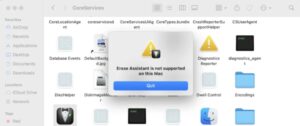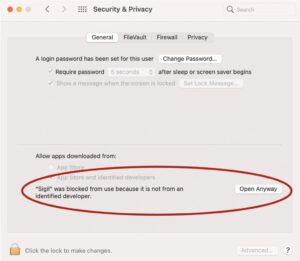Hello readers, is your keyword working correctly? One of the worst things that may happen to a laptop is that its keyboard stops working or inputs from a few buttons on the keyboard are not registered.
Most day-to-day actions, including entering a webpage address in the browser, running a Google search, and altering file names, are impossible to perform if the laptop keyboard is not operating or if keystrokes from specific keys are not being detected.
But don’t worry, there’s no need to panic if this situation happens to you. If the laptop’s keyboard has stopped working, there are some fixes you can attempt at home.
In this post, we covered the most prevalent causes of a keyboard not working in a Windows-powered laptop and the many treatments that may be done to get things back on track. If your laptop’s keyboard is causing you problems, this article will assist you in eliminating them. Let us begin.
Common Causes of Windows Laptop Keyboard Failure
If your laptop keyboard has stopped working, there could be a variety of causes, including, but not limited to:
- The keyboard drivers are either missing or broken.
- The dust has formed in the keyboard switches, preventing them from functioning correctly.
- The physical connection between the keyboard and the laptop has become loose.
- Your keyboard has been physically harmed.
- A new Windows 10 update is interfering with conventional keyboard functionality. Power settings are not correctly setup.
- The laptop battery is running low.
These are some of the causes of a laptop keyboard not working. Now that we’ve identified the most common causes let’s try to fix the problem.
Now, let us look at the solutions which will fix your Windows Laptop Keyboard issues
Restart Your Laptop
Have you tried turning off and on your laptop? Before attempting any complex remedies, a simple reboot can cure a thousand errors. If you can’t use the trackpad or mouse to reboot the system, simply hold down the power button for 10-15 seconds to turn the laptop off and back on.
If that doesn’t work, try booting into Safe Mode—it won’t solve the problem permanently, but it will help you establish whether your keyboard is defective.
Address the Problem
Try to narrow down the scope of your issue. Is there a problem with the keyboard hardware, or is it a software defect that prevents Windows from recognizing keystrokes? Understanding this can save you a lot of time later on.
Restart your laptop and attempt to access the UEFI or BIOS. As your machine boots, you must press Delete, Esc, or another key. Along the bottom of the screen, the laptops should advise you on the key to tap.
If you can’t enter the BIOS and browse it with your keyboard, you may have a hardware issue. If you can access the BIOS and the problematic key(s) function usually within that menu, the problem is with Windows.
Exit the BIOS (without storing your modifications) and proceed to the remedies listed below. To debug, you may need to connect a USB keyboard.
Reinstall Your Keyboard Driver Again
The driver that manages your keyboard can occasionally encounter issues, especially if you frequently install third-party software and/or turn your laptop off without using the Shutdown command.
Launch the Start menu and search for “Device Manager.” Expand the Keyboards section in the Control Panel by opening the Device Manager entry.
A yellow exclamation mark next to any items in this section may indicate a concern. Even if you don’t see an exclamation point, right-click your keyboard in this menu and select Uninstall Driver. Reboot your laptop, and Windows should automatically download the generic drivers for your keyboard, allowing it to work again.
If it doesn’t work or the Keyboard icon isn’t visible in the Device Manager, go to the laptop manufacturer’s help page and install the newest keyboard drivers. (If no keyboard driver is found, reinstall the chipset and/or USB drivers.)
Modify Your Keyboard Layout
If your keyboard keys work but output different letters than the keys indicate, your language or keyboard layout may have been mistakenly changed (or someone in your house played a decades-old prank).
Open the Start menu and type “Language” to get the Language preferences panel in Windows. Click on it, then scroll down to your language list. Click the Options option after selecting the language you want to use (English (United States) for most US users).
Make sure US QWERTY is available under Keyboards on the next screen, and uncheck any keyboard layouts you aren’t using.
Change Your Keyboard Settings
Even if they are intended to be helpful, many software settings can cause your keyboard to act abnormally. For example, if the Repeat Delay setting on your keyboard is too short, pushing a key may result in two or more characters typing.
Even if they are intended to be helpful, many software settings can cause your keyboard to act abnormally. For example, if the Repeat Delay setting on your keyboard is too short, pushing a key may result in two or more characters typing.
Conversely, you can change the Filter Keys setting if you see a lag between pressing a key and that character showing up on the screen. Look for “Ease of Access Keyboard” in the Start menu and navigate to that option.
Try turning off Use Filter Keys if it’s turned on to see if it makes a difference. In the same way, make sure Use Sticky Keys is disabled in this option as well if your keyboard is acting weirdly.
Look for Crumbs
The solutions listed above are software-based, but if you followed our original recommendations and believe your issue is hardware-related, you’ll need to get your hands dirty…literally. You should clean your keyboard.
Turn your keyboard (or laptop) upside down, or at least at a 45- to 75-degree angle from horizontal, then shake it vigorously.
Crumbs from working lunches or your last snack break can become lodged beneath the keys. This is more of an issue with older laptops, but it’s also worth a go on a fresh one.
Give the nooks and crevices of your keyboard a quick cleaning if you have a keyboard vacuum or a can of compressed air. If one or two keys become stuck due to soda spills, remove the offending key cap from the keyboard (if possible) and clear as much dried liquid from the key switch as possible.
Clean away the sticky residue with rubbing alcohol or soapy water on a rag, not the keyboard. A cotton swab can also be helpful in this situation; just be careful and disassemble the critical switch if you’re sure what you’re doing.
If a large keyboard piece becomes stuck due to liquid damage, such as a spilled cup of soda or coffee, the keyboard assembly may need to be replaced.
Take out the battery
A laptop’s battery beneath the keyboard can occasionally cause issues. If your laptop has a removable battery, turn it off, remove it, and connect the power line. Attempt to boot the laptop without the battery, using only AC power.
If the keyboard only functions when the battery is removed, the battery may need to be replaced.
Note: Ensure to obtain an official battery from the laptop’s manufacturer—we do not advocate third-party laptop batteries for safety reasons.
Keyboard Defect
Contact the manufacturer’s tech support number if your laptop is still under warranty. If they discover you’re using a faulty keyboard, you should be able to get it changed at a service center with little difficulty.
Launch the Troubleshooter
You can troubleshoot Windows 11/Windows 10 keyboard not working on your laptop. The built-in capability – Troubleshoot – in Windows 10/11 will be helpful too.
Step 1: First, navigate Start > Settings > Update & Security.
Step 2: Scroll down to the Keyboard section on the Troubleshoot page and select Run the Troubleshooter. You can also run the Hardware and Devices troubleshooter.
Additional methods
If none of the ways we listed above worked for you, here are some further fixes you can try:
- Reconfigure your keyboard’s regional settings, as this could be the cause of your keyboard’s problem.
- Uninstall any secondary keyboards that you have connected to the laptop.
- Look for a defective cable.
- Conduct a Clean Boot
- Make use of a wireless, USB, or external keyboard.
- Pay a visit to the service center.
Conclusion
However, before sending your laptop in or handing it over to a service technician, backup your hard drive or remove it and save it. This way, you’ll still have your data, which is the most crucial portion of your laptop.
Knowing why your keyboard stopped working does not require throwing away your laptop. Our solutions should address most potential concerns, but if you still can’t get it to function, use a USB keyboard for now and get your laptop checked out by an expert when you have the time.
You will likely be able to repair your broken keyboard by using one of these techniques. Simply try them one at a time to solve your problem. We hope this post was helpful to you.







